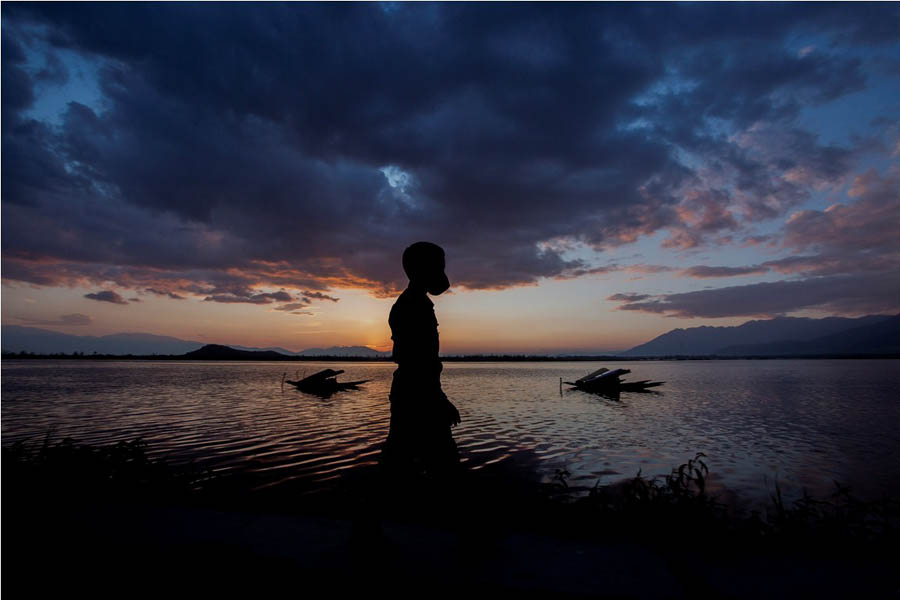
Even as life has partly resumed its halted course in the valley, the sightseeing landmarks of Srinagar remain bereft of summertime footfall. In absence of its niche audience, the places marred by pandemic are craving for life.
By Abid Bhat
IT’S a balmy summer day, and Kashmir’s iconic Nishat Bagh is yet to come out of winter.
Akin to the frosty season, when a huge padlock on its robust gate makes it a freeze frame, the garden in June looks no different.
Padlock still dangles on its door, so does the desolation inside.

Behind the closed door, glum gardeners are at work. They turn up every day to do the usual: beautify the garden for reluctant recreation-ers.
Every year in anticipation of spring, these ‘landscape technicians’ of the Mughal garden prepare a flower bed for winter-weary natives and tourists.
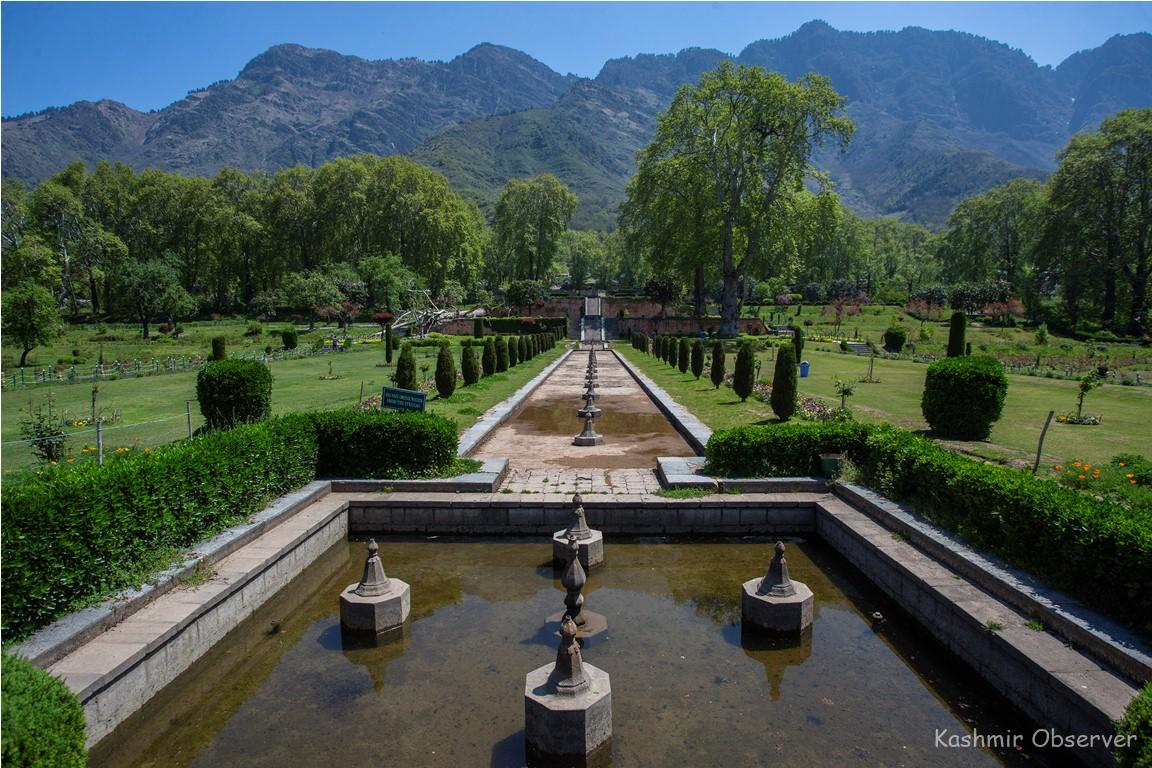
Among the early visitors would be the hearty Sikh community of Kashmir. They would begin the year with the Baisakhi celebrations in the iconic garden.
But this year, nothing of that sort happened.
Spring came and passed in total lockdown. The fear created by the deadly germ even drove out the gardeners. They’ve since then returned to tender their turf.
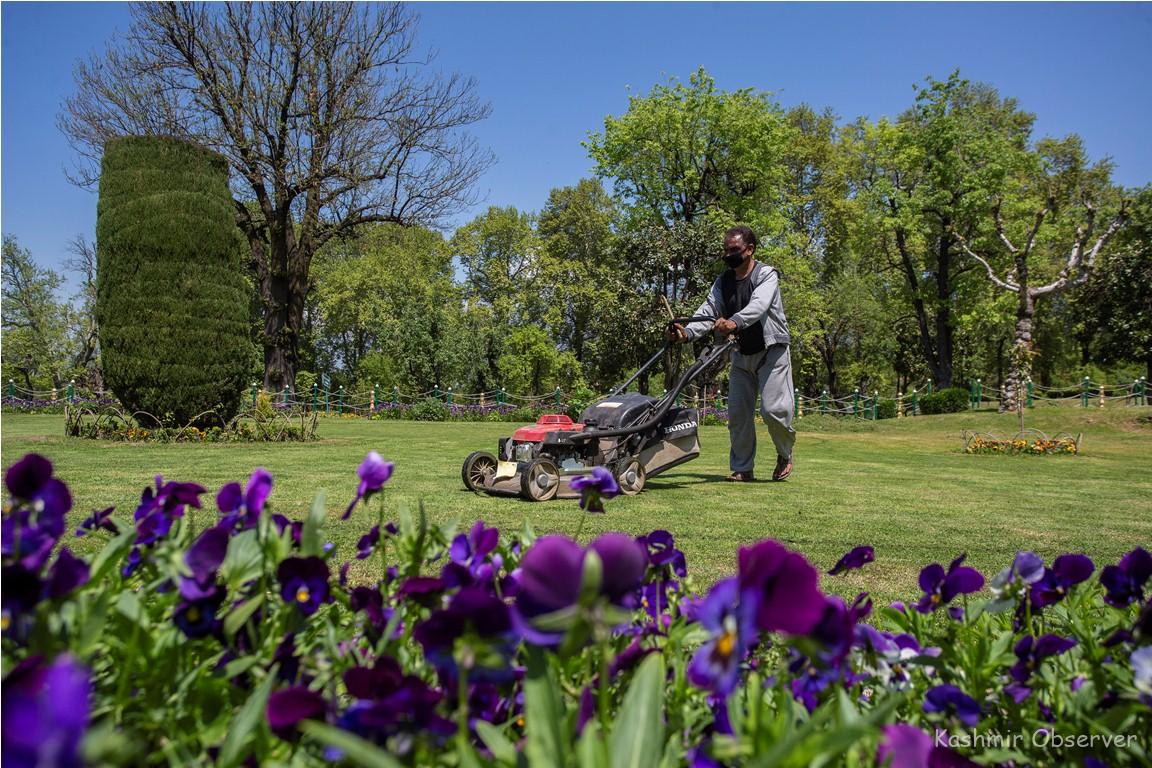
“Amid the perpetual gloom in our lives, gardens like these would give locals some sense of happiness and hope,” says a gardener of Nishat Bagh. “But this year, the virus even ended that pretense.”
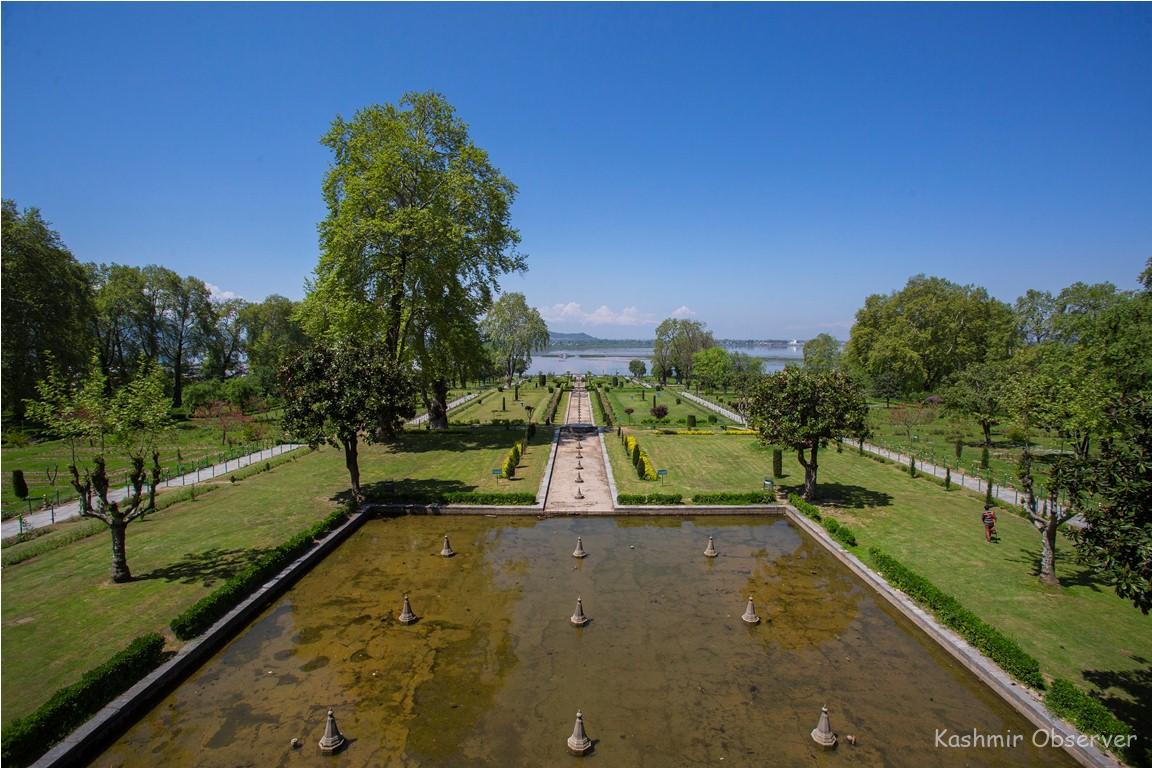
Today, except a handful of gardeners—pruning and manicuring, everything else looks lifeless in the garden.
The Mughal-era fountains are smeared with mossy bed. On the horizon, the Dal Lake appears dull, and bereft of its keen viewers.
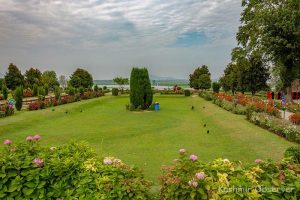
Marketplaces around these leisure spots might’ve already reopened, but the fear of microbe is still holding sightseers back.
While the countryside’s picnic points are witnessing gradual rush, the city’s hills and hillocks are playing hosts to the lockdown-weary souls these days.
For a change, the company of woods and peaks is seemingly keeping the promise of life intact in the valley.
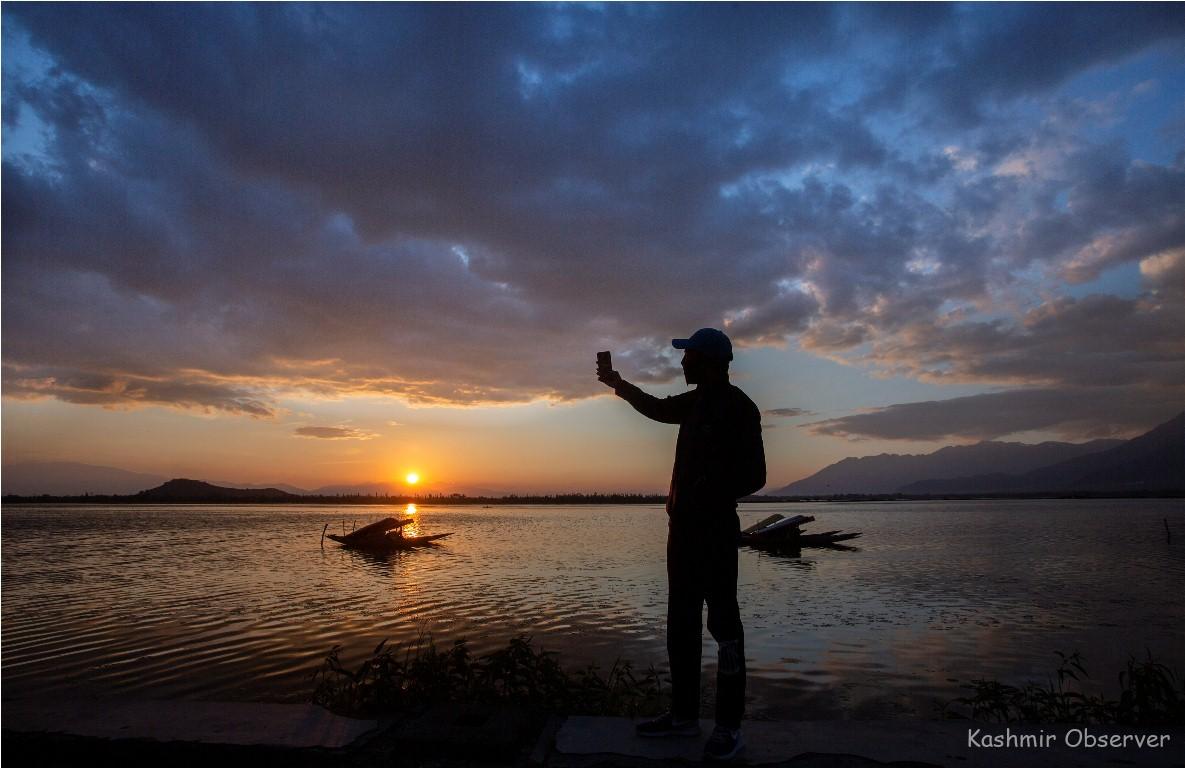
And if people aren’t up-trekking hills for elevation and elation, they’re refreshing their routine by showing up at the unusually empty banks of Dal Lake.
To avoid the scorching sun of June, the visitors show up, in twos or threes, at twilight.
Some sit and talk, others stare the lake in meditative glance, while a few eager ones take Selfies and return home with captured moments.
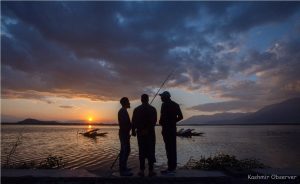
For anglers, the present pandemic period has only become a shot in the arm.
They leave on bicycles, criss-crossing the street restrictions to reach Dal Lake.
They sit under shade and sun for the prized catch. Some of them even dose off during the act before coming to senses with a sudden hook.
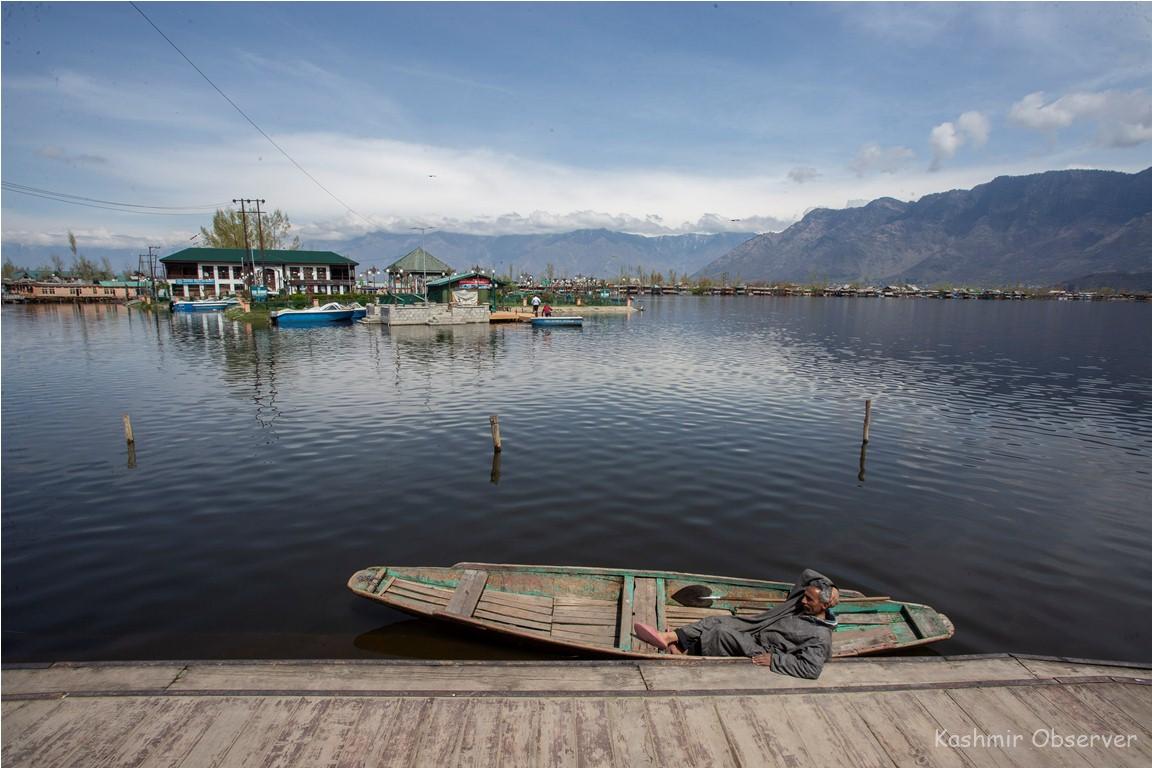
While they hunt fish, the boatmen can be seen vainly waiting for elusive vacationers.
The tourist footfall has dipped, so has the hope for the living.
The entire community seems nostalgic about “good old days”, when summer in Kashmir would witness the rush of the world-weary souls—among them: big celebrities—seeking comfort and consolation in the valley.

But now, neither those high-end tourists are showing up, nor that comfort of yore remains.
Summer in Kashmir, many say, now looks like a wailing canvas of a painter, which has everything in it, except the life it once had.
And in absence of that vital element, the picture indeed looks woeful, if not wretched.
Follow this link to join our WhatsApp group: Join Now
Be Part of Quality Journalism |
Quality journalism takes a lot of time, money and hard work to produce and despite all the hardships we still do it. Our reporters and editors are working overtime in Kashmir and beyond to cover what you care about, break big stories, and expose injustices that can change lives. Today more people are reading Kashmir Observer than ever, but only a handful are paying while advertising revenues are falling fast. |
| ACT NOW |
| MONTHLY | Rs 100 | |
| YEARLY | Rs 1000 | |
| LIFETIME | Rs 10000 | |










